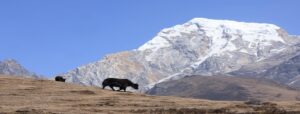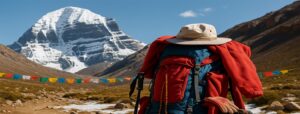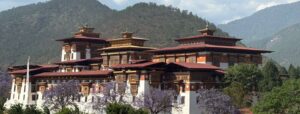Annapurna Base Camp Trek in July – Listen up adventure seekers, and get ready for the ultimate trekking experience in the Himalayas! Brace yourself for an epic journey to the Annapurna Base Camp where the scenery is nothing short of awe-inspiring, the challenges are adrenaline-inducing, and the fun is non-stop.
July is the perfect time to embark on this adventure because it’s the monsoon season which means the landscape is transformed into a lush, green wonderland that will blow your mind. Get ready to conquer rugged terrain, cross gushing rivers, and breathe in the crisp mountain air as you ascend to new heights. So, pack your bags, grab your gear, and join us for a thrilling and fun-filled adventure to the Annapurna Base Camp Trek in July!
Location and Altitude of Annapurna Base Camp Trek in July
Annapurna Base Camp is a trekking paradise situated in the Annapurna region of Nepal which lies in the heart of the Himalayas. The Annapurna massif is a part of the Himalayan mountain range and is home to some of the tallest peaks in the world.
ABC is a popular destination among trekkers from all around the globe who come to experience the beauty of this majestic region. The base camp is positioned at an elevation of 4,130 meters (13,550 feet) and offers a panoramic view of the Annapurna massif, which comprises Annapurna I (8,091 meters), Annapurna South (7,219 meters), Annapurna III (7,555 meters), Gangapurna (7,455 meters) and Hiunchuli (6,441 meters).
The weather at Annapurna Base Camp Trek in July
The weather at Annapurna Base Camp Trek in July can be described as monsoonal with heavy rainfall and occasional thunderstorms. July is one of the wettest months of the year in the region with an average precipitation of around 500mm which is about 80% of the annual rainfall.
The daytime temperature at Annapurna Base Camp can vary from 10 to 15 degrees Celsius, while the nighttime temperature can range from 5 to 10 degrees Celsius. However, factors such as altitude, time of day, and weather conditions can influence the temperature.
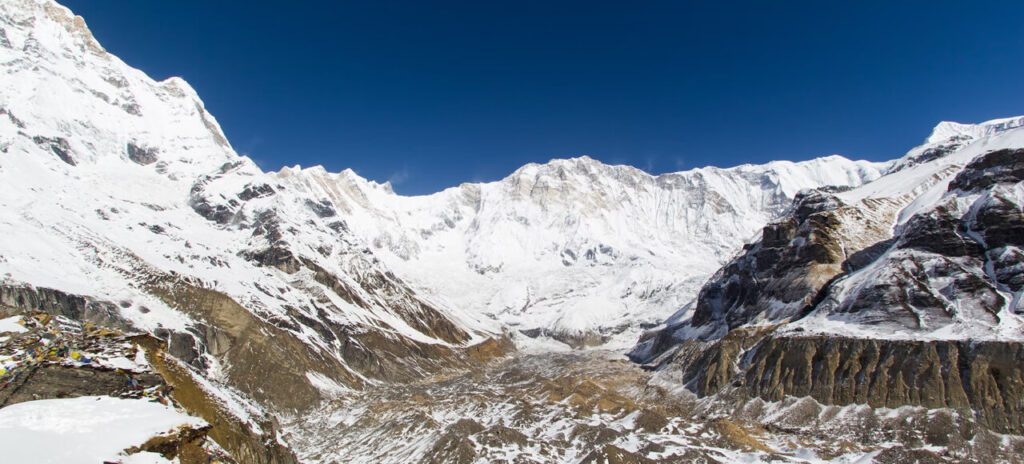
While the weather in Annapurna Base Camp in July can be unpredictable, the views of the surrounding mountains can be especially stunning in the early morning or late afternoon when the clouds clear. The visibility can vary depending on the weather conditions but on clear days, trekkers can enjoy breathtaking views of the Annapurna massif including Annapurna South, Hiunchuli, and Machhapuchhre.
The crowd in Annapurna Base Camp Trek in July
July may generally have fewer crowds in Annapurna Base Camp due to the monsoon season, it’s always a good idea to check the current situation and weather conditions before planning a trip. Trekkers should also ensure that they have the proper equipment and are prepared for the challenging conditions that may be present during the monsoon season.
July is considered the monsoon season in Nepal, which means that the weather can be unpredictable and rainy. During the monsoon season which typically lasts from June to September, the region experiences high rainfall causing the trails to become muddy and hazardous. As a result, trekking during this time can be challenging, and some trekkers may opt to avoid it altogether due to the weather conditions.
Also Read: Annapurna Base Camp Trek in May
Highlights of Annapurna Base Camp Trek in July
While the trek is breathtaking throughout the year, the month of July offers some unique highlights that are not to be missed.
In Nepal, the onset of the monsoon season starts in July, leading to significant rainfall in the Annapurna region. However, despite the downpour, hiking the Annapurna Base Camp Trek in July has its own set of advantages. Below are some of the highlights of the trek during this period:
Greenery and Waterfalls:
From June to September, Nepal experiences its monsoon season, which brings forth a mesmerizing transformation in the hills and valleys of the Annapurna region. The lush greenery takes over, and the woodlands come alive with many flora and fauna. The waterfalls, in their full flow, offer a breathtaking sight to behold, allowing you to witness their beauty up close. The abundance of greenery and cascading waterfalls throughout the trip will make it an unforgettable experience for you.
Fewer Crowds:
In July, the wet season leads to a significant decrease in tourist activity resulting in fewer crowds. This means that you can fully immerse yourself in the trek’s natural beauty without any interruptions or distractions. You can take your time, appreciate the stunning landscapes, interact with the locals, and learn about their unique culture at a more relaxed pace.
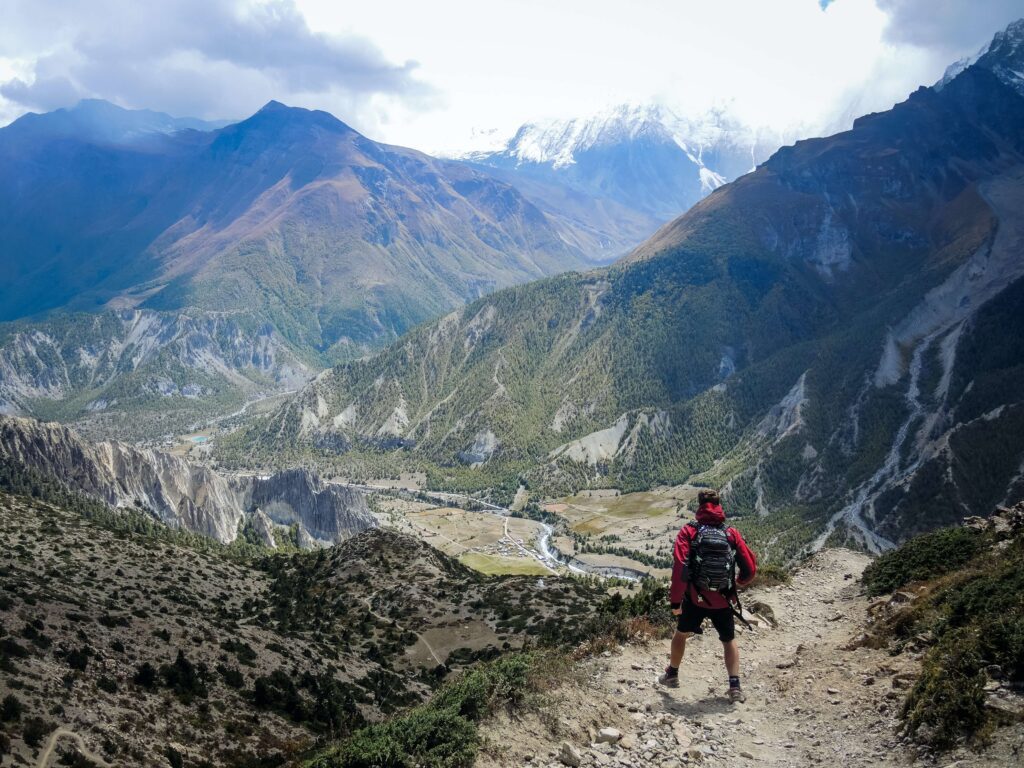
Cultural Festivals:
Nepal is a diverse country with a rich array of cultures and customs, and the month of July is marked by several festive occasions. The locals celebrate holidays such as Gaijatra, Nag Panchami, and Janai Purnima during this time. While trekking, you can witness lively celebrations and cultural performances. The hospitable locals are warm and courteous, and you can take the opportunity to learn more about their unique traditions and customs.
Clear Views:
Many people assume that the monsoon season in Nepal means cloudy weather and poor visibility. However, this is not entirely true. The Annapurna region experiences clear skies in the morning during this time and you can witness some of the best views of the Annapurna range. The clouds and mist add a dramatic effect to the landscape making it even more enchanting.
Offbeat Trails:
The monsoon season in Nepal opens up many offbeat trails that are inaccessible during the other months. If you are an adventure seeker then July is the perfect time to explore these trails. You can witness the untouched beauty of the Annapurna region, interact with locals and experience their way of life. These offbeat trails offer a unique experience that you will not find during the peak season.
You may also like: Annapurna Base Camp Trek in June
Mountains peak visible from ABC:
The Annapurna Base Camp trek is renowned for offering stunning views of several peaks in the Annapurna range. The dominant mountain visible from Annapurna Base Camp is Annapurna South. Other mountains in the range that you can see from various points along the trek include Annapurna I, Hiunchuli, Machhapuchhre, and Gangapurna.
The unique and beautiful shape of Machhapuchhre is a particular highlight of the trek. Additionally, although not part of the Annapurna range, Dhaulagiri, the seventh-highest peak in the world, can also be seen from various viewpoints along the trek. These stunning mountains provide an awe-inspiring backdrop to the beautiful landscapes, forests, and villages that you’ll encounter on the Annapurna Base Camp trek.
Flora and Fauna
The area is known for its stunning landscapes, rugged mountains, and diverse flora and fauna. In July, the region is alive with lush greenery and blooming flowers making it an ideal time to explore the natural beauty of the area.
Flora
The Annapurna Base Camp‘s flora is a magnificent sight featuring numerous flowering plants such as rhododendrons, which bloom in varying shades of pink, red, and white. The woodlands in the area are predominantly composed of oak, pine, and cedar trees, offering habitats for a diverse range of birds and animals. Moreover, the region is a sanctuary for various rare and endangered plant species including the medicinal Himalayan Yew.

The Annapurna Conservation Area is an officially designated protected area and the Nepalese government has taken significant measures to preserve the region’s unique vegetation. Additionally, there are community-managed forests in the area that are sustainably managed generating income for local residents while also preserving the ecology.
Fauna
The Annapurna Conservation Area is a haven for wildlife enthusiasts with a diverse range of mammals, birds, reptiles, and amphibians found in the region. The Himalayan Tahr is a common sight in the area along with musk deer, langur monkeys, and the elusive snow leopard.

The region is also a birdwatcher’s paradise with over 450 species of birds found in the region. Some of the most notable birds include the Himalayan Monal which is the national bird of Nepal, the Spiny Babbler, and the Eurasian Eagle-Owl.
The area is home to various reptiles and amphibians with snakes, lizards, and frogs being a few examples. Moreover, the Annapurna Conservation Area boasts several fish species that can be found in the rivers and streams flowing through the region.
The oversight of the protected area is the responsibility of the Annapurna Conservation Area Project, established in 1986 to facilitate sustainable development while safeguarding the unique biodiversity of the region. The project’s accomplishments include mitigating deforestation, promoting sustainable tourism, and enhancing the livelihoods of the local communities.
Route of Annapurna Base Camp
The Annapurna Base Camp trek is one of the most popular trekking routes in the world located in the Annapurna region of Nepal. This trek takes you through some of the most breathtaking landscapes in the Himalayas including lush forests, traditional Nepalese villages, and high-altitude mountain trails. The route to Annapurna Base Camp can be divided into several sections each offering a unique experience.

The trek typically starts from Nayapul which can be reached by a 1-2 hour drive from Pokhara. From Nayapul, the first section of the trek involves walking through lush forests of rhododendron and bamboo and crossing several streams and waterfalls. The trail then climbs up to the village of Tikhedhunga where trekkers spend the first night.
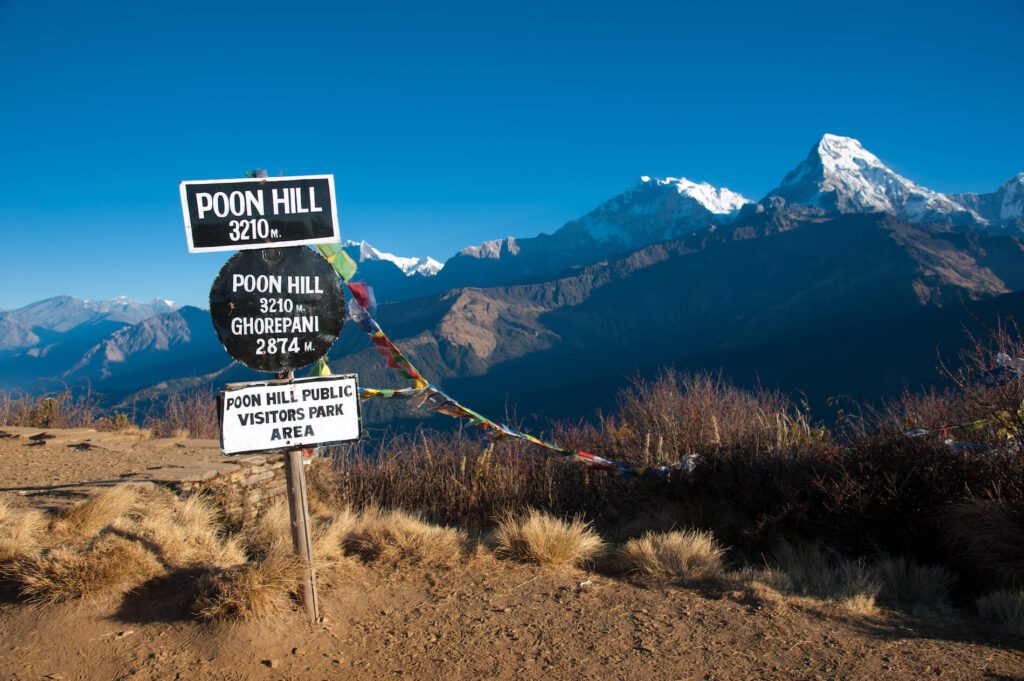
The next section of the trek involves climbing up a steep stone staircase known as the Ulleri stairs which consists of around 3,000 steps. The climb can be challenging, but the stunning views of the surrounding mountains make it all worth it. After reaching the top of the stairs, the trail continues through dense forests and crosses several suspension bridges eventually leading to the village of Ghorepani where trekkers can catch a glimpse of the sunrise over the mountains from Poon Hill.
Kali Gandaki Valley to Base Camp
The third section of the trek takes trekkers through the Kali Gandaki Valley, the deepest gorge in the world, and offers stunning views of the Dhaulagiri and Annapurna mountain ranges. The trail passes through several traditional Gurung villages where trekkers can experience the unique culture and traditions of the local people.

Trek to Annapurna Base Camp offers a breathtaking sunrise view at 4,130 meters, winding through Modi Khola Valley, surrounded by Annapurna South, Hiunchuli, Annapurna I, Gangapurna, and Machhapuchhre peaks. Awe-inspiring!
Popular: Annapurna Base Camp Trek in April
The return journey from the base camp follows the same path back to Nayapul, taking approximately 7-12 days, depending on pace and acclimatization days in the plan.
Merits and Demerits of Annapurna Base Camp Trek in July
Trekking in July has its own merits and demerits, which are discussed below:
Merits
- Fewer Crowds: Walking to Annapurna Base Camp in July has the significant advantage of reduced traffic on the trail. As July falls during the rainy season in Nepal, it is considered a low season for trekking, resulting in fewer tourists. This means you can relish the route without feeling overcrowded and have more opportunities to interact with people and absorb the surroundings.
- Lush Greenery: During the monsoon season, the Annapurna region receives copious rainfall that transforms the hills and forests into a stunning green paradise. This creates a refreshing and rejuvenating atmosphere that you can fully enjoy while on the walk. The lush vegetation provides a beautiful contrast to the snow-capped peaks, further enhancing the scenic beauty of the area.
- Lower Prices: As July is a low season for trekking in Nepal, prices for accommodation, food, and other services are relatively lower. Therefore, you can enjoy the trek without spending too much money. The lower costs can be beneficial for budget-conscious travelers who want to enjoy a trek without breaking the bank.
Demerits
- Heavy rainfall: One of the significant challenges of trekking to Annapurna Base Camp in July is the heavy rainfall that the region experiences during the monsoon season. This can lead to natural calamities such as landslides, floods, and other hazards making the trail more challenging and arduous. Therefore, Being prepared for the possibility of rain and the obstacles it may bring is crucial.
- Poor visibility: Trekking during the monsoon season also reduces visibility due to clouds and mist. Cloud cover can make it difficult to enjoy the stunning views of the Himalayas. However, Early mornings and late afternoons offer better visibility for enjoying scenic views even in cloudy conditions.
- Leeches: The monsoon season is the breeding season for leeches and they are found in large numbers during this time. Leeches can be quite unpleasant and uncomfortable for trekkers, as they attach themselves to the skin and feed on blood. Therefore, it is important to take precautions against leeches, such as wearing appropriate clothing and using insect repellent.

Tips for Annapurna Base Camp Trek in July
July is the monsoon season in Nepal, which means there can be heavy rain, landslides, and difficult trekking conditions. However, with proper planning and preparation, it is still possible to do the Annapurna Base Camp trek in July. Here are some tips to consider:
Check the weather forecast:
During the monsoon season in Nepal, the weather can be unpredictable and there can be heavy rainfall, landslides, and flooding. Before starting the trek check the weather forecast for the area you will be trekking in. This can give you an idea of the conditions you can expect and help you plan accordingly.
Bring proper gear:
Proper gear is essential for trekking during the monsoon season. Be sure to bring waterproof clothing including a rain jacket, rain pants, and rain cover for your backpack. Waterproof hiking boots are also essential to keep your feet dry and avoid slips and falls on wet trails.

Bring a hat or cap and gloves to protect your head and hands from rain and cold. In addition, bring a sleeping bag suitable for cold temperatures as the nights can get quite chilly.
Start early:
It’s best to start early in the day during the monsoon season. Start early to avoid heavy afternoon rain, ensuring drier trekking and reaching destinations by nightfall.
Be flexible:
Weather conditions can change rapidly during the monsoon season and landslides or flooding can make some trails impassable. Be flexible with your itinerary and extend stays during severe weather.
Stay in tea houses:
During the monsoon season, staying in tea houses is recommended instead of camping. Tea houses provide shelter, meals, and basic amenities like hot showers and charging points for electronic devices. You can also dry your clothes and gear which is essential for keeping warm during the trek.
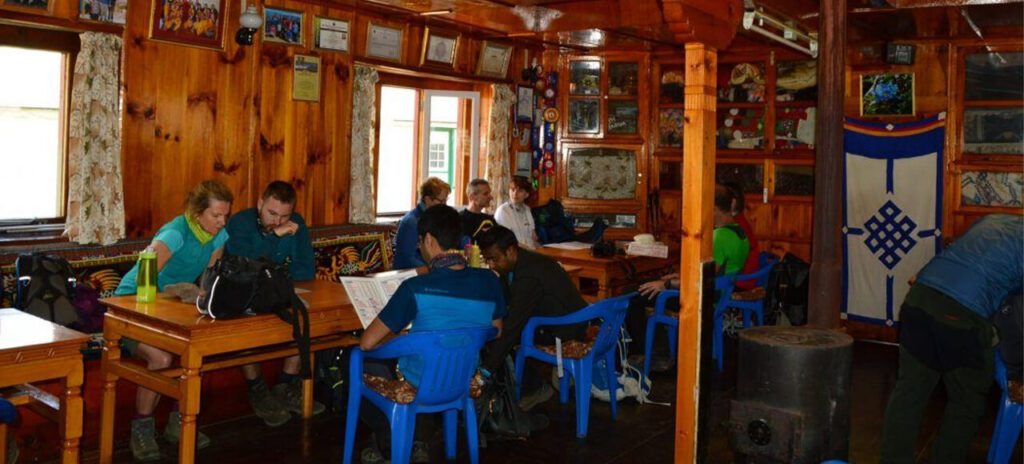
More: Annapurna Base Camp Trek in February
Bring insect repellent:
Insect repellent is essential in monsoon season to ward off mosquitoes and diseases.
Stay Hydrated:
Stay hydrated in the rain with a reusable water bottle and purification tablets or a filter. Avoid expensive bottled water and environmental harm.
Hire a local guide:
Hire a local guide for expert terrain navigation. A local guide can also provide valuable insights into the local culture and traditions.
Let our expert team at Asian Heritage Treks and Travel take care of everything — from guided tours to personalized packing tips and travel arrangements.
Plan My Annapurna Trip




